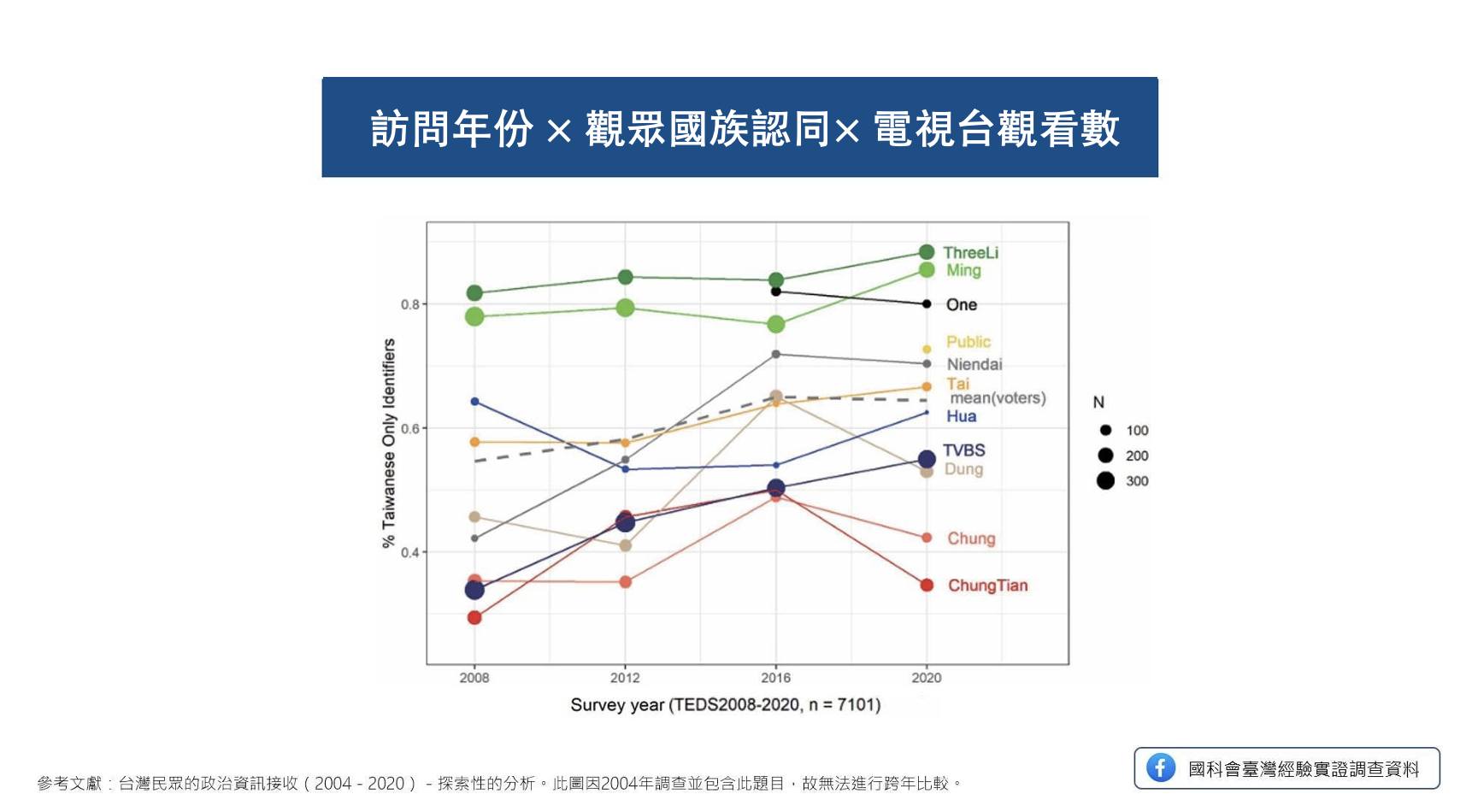Exploring the changes in political orientations of the public and major TV stations over the past two decades
In today’s information-saturated world, we are constantly overwhelmed by an excess of data that we cannot fully absorb. As a result, it becomes necessary to filter information. However, filtering is an exhausting task, so people tend to prefer receiving curated summaries instead. For instance, many choose to consume news only from media outlets that align with their political views, thereby avoiding content that conflicts with their values.
Researcher Wang Hung-En used data from the Taiwan Election and Democratization Study (TEDS) for the presidential elections in 2004, 2008, 2012, 2016, and 2020 to examine how the political orientations of the public and major TV stations have evolved over the past two decades.

Results
📈 Compared with the national average level of identity, TV stations whose audiences held more extreme national identities had higher viewership.
📈 TV stations with audiences showing more extreme identity positions in 2008 remained in similarly extreme positions in 2020.
These findings may suggest that people tend to watch news channels that align with their political stance, rather than independently assessing the value of information. Moreover, this tendency has persisted over the past twelve years. However, if individuals only consume media that reinforces their own views—or even criticizes opposing sides—this may further intensify social polarization.
When everyone prefers to stay within their own echo chambers, some TV stations still attract audiences with diverse national identities. So, what makes those viewers—who choose media with less obvious political leanings—different from others?
Check out the link in the comments 🔗 to explore more data from the Taiwan Election and Democratization Study (TEDS).
Original links:Political Information Consumption among Taiwanese Voters (2004-2020): An Exploratory Analysis

